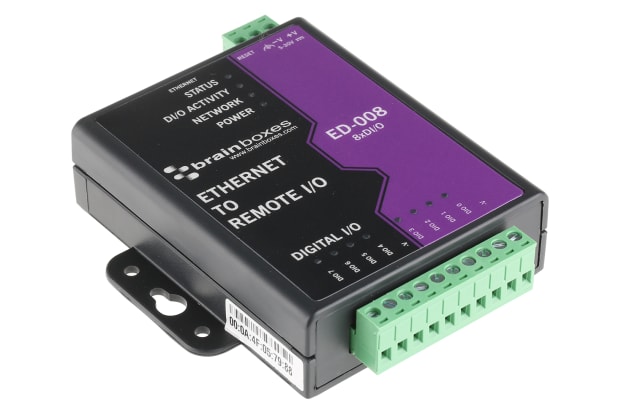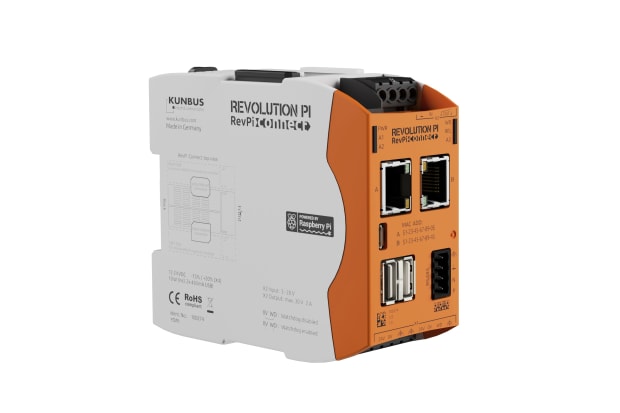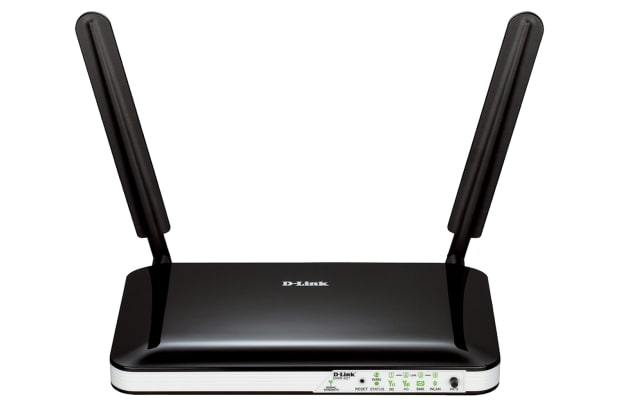- Published 17 Jan 2023
- Last Modified 23 May 2024
- 21 min
An Introductory Guide to the IIoT
Discover more about the Industrial Internet of Things, including its uses and benefits, in our introduction to IIoT.

Reviewed by Jay Proctor, Technical Support Team Leader (June 2021)
In this introduction to Industrial Internet of Things and Industry 4.0, we will examine the IIoT for industry. We will explain what it is, how it impacts industrial technology, and the benefits and challenges behind this recent technology revolution.
What is the Internet of Things?

The Internet of Things (IoT) is a broad term for all devices connected to a network (including the Internet) that can communicate autonomously without human intervention. Essentially, it is a connected infrastructure where almost every type of machine and device has built-in intelligence capable of transferring data and interacting with other machines, and via these devices, with people.
The term was first used to describe digitally connected devices and products in the consumer space. Nowadays, IoT for industry is often referred to as the Industrial Internet since it has the potential to transform both industry and society, in a similar way to the first industrial revolution.
What is the IIoT?
So, what is the Industrial Internet of Things? IIoT stands for Industrial Internet of Things, describing how the same concept of IoT can be used in manufacturing or other industrial processes. It takes the concept of networking devices and connecting them to the internet to share data – locally or remotely – in factories, industrial processes, and industrial buildings. This forms the backbone of Internet of Things industrial automation.
Smart equipment and machinery can track, log, display, monitor, and adjust itself as required. Sensors collect the information, which is consolidated via a gateway to the local network, then onwards through an edge controller to the internet or the Cloud – data servers within large data centres.
IIoT vs IoT
The key difference between IoT and IIoT lies in the application. Industrial IoT centres around the real-time collection and analysis of granular data from connected sensors, enabling rapid improvements in efficiency and productivity, instantaneous stock control, and significant cost savings.
Industrial IoT is based on an established approach to computer-controlled manufacturing: the ‘distributed control system’. These control functions are assigned across the network and multiple autonomous devices are interconnected, each able to adjust and optimise their own section of the manufacturing line without a central control system and the associated risk of a single point of failure. The IIoT takes advantage of modern cloud computing to allow data sharing, visualisation, and analysis – all in near real-time.
The Industrial Internet of Things has grown into a huge sector in just a few decades. More than 60 per cent of global manufacturers now use IIoT technologies for optimisation and analysis.
This distinction highlights the difference between IIoT and IoT in manufacturing and industrial applications. It is also pertinent to note the comparison of the Internet of Things vs Industry 4.0.
What is the Difference Between Industry 4.0 and the Internet of Things?
You may also have heard the term Industry 4.0 in relation to the IoT. Although the terms are sometimes used interchangeably, they are not synonymous. This is because IoT and IIoT are subsets of Industry 4.0.
Industry 4.0 is a broad term which encompasses the accelerating use of - and benefits derived from - all the advanced automation technologies now available to industry and smart manufacturing, including:
- Machine-to-Machine (M2M) communication
- Autonomous systems implementation
- Seamless cloud computing
- Artificial intelligence and related ‘cognitive’ technologies such as image recognition
The History of the IoT and Industry 4.0
The Internet of Things may seem like a very modern concept but some of the core Industry 4.0 technologies date back to the 1960s. The programmable logic controller (PLC) - effectively an early industrial computer - was invented in 1968 and designed to fine-tune the manufacturing process. The first distributed control systems for industrial settings appeared in the 1970s, sparking the gradual supplementation of manual labour with automation within factories.
The Internet of Things as we know it today first came into focus during the following decade. However, it was not until the early 2000s that the IoT moved out of university laboratories and into purchasable products. This growth was accelerated by the development of enabling technologies like Bluetooth, near-field communication (NFC), and 4G/5G cellular networks.
Further developments followed in the 2000s, including the creation of now-ubiquitous cloud computing technologies which accelerated the evolution of the IIoT.
Who Coined the Term IIoT and Industry 4.0?
We know where the Internet of Things originally came from, but it is tricky to pinpoint who coined IIoT.
The term ‘Industry 4.0’ was coined as recently as 2011 by the German government to encourage the use of information technology in manufacturing. It was intended to suggest that modern automation and data-sharing technology are equal in significance to three previous industrial revolutions, namely:
- The development of steam and water-powered manufacturing technology in the latter half of the 18th and first half of the 19th Century
- Widespread electrification, alongside the spread of railways in the 19th century, enabled multiple technological and industrial developments. The telephone, the automobile, photography, and motion pictures all appeared between 1870 and World War One
- The digital revolution - i.e. the creation of modern IT in the second half of the 20th Century
We may not know who coined the term ‘Industrial Internet of Things’ for certain. However, the name ‘Industry 4.0’ makes logical sense and boosts understanding of the meaning behind the concept.

What is the Industrial Internet of Things Used for Now?
Industry 4.0 can bring benefits to a broad spectrum of industries and sectors.
Just a few IIoT applications and examples include:
- Smart factories
- Supply chain and inventory optimisation
- Data analytics
- Smart buildings
- Condition monitoring
To understand how IoT will impact different industries in the future, it is important to understand how the manufacturing industry uses IIoT now. Of course, manufacturing is not the only sector to benefit from Industry 4.0. It’s also clear to see how IoT is transforming the energy industry and the retail industry with connected devices and smart systems.
The Effects and Benefits of the IIoT in Manufacturing
So, what benefits does the Industrial Internet of Things have in manufacturing? Let’s look at a few examples of how the manufacturing industry uses IIoT:
- Optimising the manufacturing line: Industrial IoT sensors enable continuous monitoring of the production line from start to finish. This enables operators to continuously fine-tune the manufacturing process, saving time and money
- Inventory and supply chain management: manufacturing relies on the availability of raw materials and components. RFID (radio frequency identification) tags and similar technologies allow components and supplies to be tracked continuously, in real-time, from location to location, providing continuous monitoring of inventory and compensatory adjustments
- Packaging assessment: Industrial IoT sensors allow manufacturers to monitor packaging condition during transit and storage and even assess how customers typically interact with it, enabling improvements to design
- Real-time manufacturing data: IIoT devices can supply real-time operational data to suppliers, enabling responsive adjustments and remote management of factory units
- Maintenance data: Industrial Internet of Things devices can issue alerts when faults occur and maintenance is required. Similar alerts can be issued in response to operating issues, such as higher-than-recommended operating temperatures or excessive vibration, which could indicate an impending hardware failure. These alerts provide clear advantages in allowing maintenance to be scheduled in advance, minimising downtime and lessening accident risk. Such data can be combined with health and safety records to improve overall safety
- Quality control: IIoT data from multiple sources, including suppliers, manufacturing processes and end-users, can all be combined to enable overall improvements to product design and production
What are the Challenges of Industry 4.0?
This is a complex question with no easy answer.
As with any huge technological change, there is a lot of work to be done behind the scenes to make these changes a reality in everyday life. Many companies are working to ensure that the underlying infrastructure and connectivity can support the IoT, for both wired and wireless connections.
As the world becomes more interconnected, we become more dependent on networks. It is also essential to ensure that suitable regulations are in place and fully observed.
At its broadest, Industry 4.0 is a configuration of multiple networking technologies, so the biggest challenges focus on the maintenance of strong and secure inter-device connections. This is achieved via:
- Selection of robust, fit-for-purpose networks – either wireless or wired
- Adopting protocols which promote inter-operability e.g. OPC UA
- Maintaining vigilance about network security to ward off cyber threats
As a result, the principle challenges of the IIoT similarly revolve around data storage and digital security. There are privacy and security concerns at all levels. Technology will allow access to unprecedented amounts of data, and everyone involved will need to be vigilant and resilient to ensure this data remains secure.
In addition, there are additional technological requirements posed by the constant need for uninterrupted device connectivity. It is also imperative to understand security considerations and challenges in adopting the IIoT to ensure a smooth, efficient implementation.
So, what are the risks associated with IIoT?
As with all aspects of the digital environment, cybersecurity is crucial for the Industrial Internet of Things. Many consider the primary risk associated with IIoT to be online security, yet security issues are rare. Taking precautions, practising cyber security, and maintaining a secure system are the keys to avoiding IIoT risks while making the most of connected system benefits.
With that in mind, it’s critical to keep abreast of the latest technologies and updates to stay prepared and protected as the Industrial Internet of Things continues to evolve.
IoT Potential: What is the Future of the IIoT?
Both the Internet of Things and the Industrial Internet of Things are constantly evolving. As the latest technologies become available and businesses become increasingly interested in IIoT benefits, more possibilities open up. This also brings numerous predictions about where the Internet of Things is heading in the future.
While it’s difficult to know exactly what the future of IIoT holds, digital connectivity has the potential to change industry and impact businesses around the world.
For instance, in the near future, we may live in a world where buildings automatically adjust their temperature to outside weather conditions. Industrial refrigerators could restock themselves according to ingredient lists specified by chefs, or vehicles in a garage could automatically order parts as required.
These smart, networked devices will be able to publish data on the Internet. This information could be used in various ways to improve the products and services we use every day. It will provide the basis for smart grids and connected cities, improving energy use and consumption, traffic flow, and services for the public.
The IoT could solve numerous problems in two major areas - power and healthcare. For example:
- Buildings waste more energy than they use. With the IoT, this could be reduced to almost zero
- The IoT could enable continual monitoring of bodily functions without visiting a doctor
The IIoT is also likely to have a major impact on the logistics industry and supply chains, as objects can transmit their location and therefore be redirected more easily in the event of supply disruption.
What is IoT Connectivity?
Companies can take advantage of the new opportunities, business models, and revenue streams that are enabled by connectivity.
IoT-connected devices create a world in which data is shared between systems, devices, and physical objects such as sensors, on-device software, and adjacent technologies. The essential enabling technology is the connection between the "things” of the IoT which enables these exchanges to take place.
Different types of IoT connections are used, depending on individual device requirements. These vary in two contexts:
- IoT and connected devices that rarely need to communicate with small amounts of data
- Always connected IoT devices that require large amounts of data to communicate at high speed and low latency
The Next Level in Artificial Intelligence
There is a wide variety of IoT connections which can be used to connect something as small as a dental implant or something as large as a tractor.
Linking all these different things to the IoT and adding sensors provides enhanced digital intelligence. This enables connected devices to communicate in real-time and participate in large-scale automated processes.
As the IoT evolves, the number of connections accelerates rapidly. Forecasts for IoT-connected devices show an upward trend in implementation with a huge number of devices connecting to the internet.
Internet of Things Architecture

There are three core elements typically referenced in the IoT architecture.
- Things: Devices that connect(wired or wirelessly) to a wider network
- Network: The network or gateway that connects multiple devices to the cloud
- Cloud: Remote servers in a data centre that consolidate and store data safely and securely
These three elements are explored in further detail in the sections below.
IIoT Networks, Protocols and Connections
Like any other information technology, the Industrial IoT uses a variety of protocols (data communication formats) and network types. As a result, it's important to clarify each if you plan to create an IIoT infrastructure for your manufacturing premises.
Types of IoT-connected devices range from sensors and actuators performing relatively simple functions (such as turning a light on or off), to complex, always-on connected devices.
Continuous monitoring has demonstrated the benefits of IoT in ensuring uninterrupted cold chain logistics, for example. However, more recent industrial internet applications will depend on high-bandwidth and low-latency connectivity to enable remote medical procedures or video-enabled security, for instance. Therefore, the types of connections are becoming increasingly diverse, taking into account IoT devices' differing needs.
There are lots of languages or protocols emerging suited to the IoT, from traditional Wi-Fi or Bluetooth to newer LoRaWAN and Sigfox. Each is suited to different uses depending on several key factors:
- Data Rate: How much information is sent?
- Power Consumption: For example, wearables only have a small battery life
- Range: Does it need to be transmitted a few metres or a few kilometres?
- Frequency: What frequencies are available in the region?
The list of IIoT-suitable networks expands continuously, but key examples include:
Hyper-Scalable Internet of Things
Different types of connections and devices are now combined to create the hyper-scalable Internet of Things, driving innovation and increasing the scope of what is achievable by connecting devices and connecting the digital and physical worlds.
LPWAN (Low-Power Wide-Area Network)
Low-power wide-area networks (LPWAN) typically use unlicensed spectrum radio technology to enable relatively low capacity on sites such as factories, campuses, and mines. The majority offer a low-energy consumption, cost-effective alternative to mobile phone connectivity and are suitable for IoT applications that need a modest operating range.
Key types of LPWAN connectivity include:
Wi-Fi
This wireless networking technology has become very familiar to most of us since it became the standard method for connecting PCs, smartphones, and tablets to the internet. It's commonly used for internet access and local area networking of devices in homes, offices, and businesses. Wi-Fi has a range of 20-150 metres with some versions reaching speeds of over1 Gbps. It is a derivative of the established wired Ethernet network and is based on the IEEE (Institute of Electrical and Electronic Engineers) 802.11 wireless standard.
Bluetooth
Bluetooth is a short-range communication standard based on ultra-high frequency (UHF) radio waves in the ISM bands, from 2.402 GHz to 2.48 GHz. Bluetooth wireless technology is widely used in consumer applications for creating personal area networks and sharing data between fixed and mobile devices over short distances.
Bluetooth Low Energy (BLE)
Bluetooth Low Energy is aimed at healthcare, security, home entertainment, and wireless beacons. Independent of Bluetooth, BLE offers low power consumption while maintaining conventional Bluetooth range.
Zigbee
Zigbee is a low-power communication protocol used to create personal area networks. Typical applications include domestic automation, device data collection, and other low-power, low-bandwidth uses. This technology is limited to transmission distances of 10-100 metres within line of sight to keep consumption down. Zigbee has a defined data speed of 250 Kbps and is suitable for intermittent data transmission.
Zigbee 3.0 is the latest version and is widely used in industrial and factory settings. The related protocol Dotdot was created by the same team and has become an internationally accepted, universal method of secure connection between different Internet of Things devices.
LoRaWAN
LoRaWAN (Long Range Wide Area Network) provides two-way secure connections across very large networks. This networking protocol connects battery-operated wireless devices to the internet in regional, national, or even global networks. It meets IoT requirements such as bi-directional communication, end-to-end security, mobility and localisation services. LoRaWAN transmission speeds range from 0.3 kbps to 50 kbps.
Sigfox
Developed in France, Sigfox connects low-power, always-on objects like electricity meters and smartwatches, allowing them to continuously exchange small quantities of data. Sigfox is similar to LoRaWAN in that it is a technology designed for global coverage to provide wireless networks to connect low-power objects. With minimal power consumption, it uses 900MHz bandwidth and supports up to 140 uplink messages per day. These messages can carry 12 octets of payload data at 100 bits per second.
Narrowband IoT (NB-IoT)
NB-IoT is an LPWA (low-power wide-area) technology developed to enable a wide range of IoT devices and services. NB-IoT significantly improves device power consumption, system capacity, and spectrum efficiency, especially in deep coverage. Battery life of over 10 years can be supported for a wide range of uses. It provides a simpler, lower bandwidth alternative to mobile phone networks.
IIoT Data Protocols
Things generate data – small bytes of simple data representing sensed information such as temperature, humidity, or position. This is often described as ‘little data’ as it is small in size.
Once multiple devices pass this little data up through the network to the Cloud it is consolidated and tracked over time, often becoming ever larger. This is sometimes described as ‘big data’ and this is where the IoT excels. Big data allows you to interrogate thousands or millions of data points to learn, understand, or control something more effectively.
Sensor analytics connect events to results or actions. For example, sensors detecting that a machine is vibrating more than normal may be a sign it is about to fail. This allows parts to be ordered and predictive maintenance scheduled.
Common IIoT data protocols include:
- MQTT (Message Queue Telemetry Transport) is a lightweight, low power protocol used to transmit simple data sets between sensors and applications. It sits on top of the standard internet networking system TCP/IP (Transmission Control Protocol/ Internet Protocol)
- AMQP (Advanced Message Queuing Protocol) is an international standard focused on the transmission of messages between devices. It is approved as an international standard
- OPC UA (OPC Unified Architecture) is an open machine-to-machine communication protocol supporting cross-platform industrial automation data sharing and robust interoperability of systems
“Things” in the IoT
The Internet of Things includes numerous devices. See below for some common examples of connected devices and what they are typically used for.
- Access Point: An access point is a wireless networking device that acts as a portal for connecting devices to a local network
- Device: A device is a piece of hardware or equipment programmed to perform one or more processing functions within a system
- Beacons: Small transmitters that connect to Bluetooth and Bluetooth Low Energy (BLE) enabled devices such as smartphones or tracked packages
- Gateway: A "translating hub” that facilitates communication between two computers or devices allowing them to understand each other's data transfer and communication
- Hub: A hub is a hardware controller that connects data transmission devices to a central station
- Sensor: A sensor is a device that detects physical input from its environment and converts it into data that can be interpreted by a person or machine
IoT: Where the Physical World Meets the Digital
What is required for devices and machines to communicate intelligently with the internet? Below is a list of key technologies.
- Actuator: A component responsible for moving or controlling a mechanism or system, such as opening a valve
- Cyber-Physical Systems: Systems that integrate computing, networking, and physical processes with feedback loops where physical processes affect computations and vice versa
- Contactless: Describes technologies that allow a smart card, mobile phone, or other device to connect wirelessly, without contact, to an electronic reader, typically to make a payment
- Digital Twins: A virtual replica of physical devices, processes, people, places, systems, and devices that can be used for various purposes and integrates historical machine data into a digital model
- Geofencing: The use of GPS technology or RFID to define a virtual geographical perimeter within which devices can operate
- Geographic Information System (GIS): A system designed to acquire, handle, analyse, manage, and present spatial or geographical data
- Global Positioning System (GPS): A technology that enables localisation services
- Global Navigation Satellite System (GNSS): A satellite constellation providing signals from space that transmit positioning, navigation, and timing data to GNSS receivers
- Haptics: The science of applying tactile sensations and control to human interactions with computer applications
- Hardware-Assisted Virtualisation (HAV): The use of a computer’s physical components to support software that creates and manages virtual machines (VMs)
- Inertial Measurement Unit (IMU): Measures specific force, angular motion, and magnetic field of devices, such as drones
- Light Detection and Ranging (LIDAR): LIDAR is a remote sensing technology that uses laser pulses to collect measurements which can then be used to create 3D models and map objects and environments
- Mechatronics: Combines electrical and mechanical engineering with computer science, and includes robotics, electronics, information technology, telecommunications, systems, control, and product engineering
- RADAR: A detection system that uses radio waves to determine object range, angle, and speed
- Telematics: A method of tracking an asset using GPS and onboard diagnostics to log movements on a computerised map
Hardware and Software
The IoT must work in combination with suitable hardware and software, including:
- eSIM: An embedded SIM (also called eSIM or eUICC) is a secure technology designed to remotely manage multiple mobile network operator subscriptions and comply with GSMA specifications
- Integrated Circuit Card Identifier (ICCID): An individual serial number embedded in a SIM card
- International Mobile Subscriber Identity (IMSI): An individual, usually fifteen-digit number that identifies a device connected to GSM
- IoT Module: A small electronic device embedded in objects, machines, and things connected to wireless networks that send and receive data
- IP Address: An Internet Protocol address is an identification number assigned to a computer (or other device) connected to a network, particularly the internet
- Modem: A hardware device that enables a computer to send and receive data over a telephone line, cable, or satellite connection
- Router: A hardware device designed to receive, analyse, and transfer incoming IP packets to another network
- Wireless Modem: A modem that bypasses the telephone system and connects directly to a wireless network, through which it can directly access an internet connection
FAQs
How to Start Your IIoT Journey
Are you ready to begin your IIoT journey? Explore the related product ranges below and kick-start your industrial technology revolution.


